On May 4, 1865, President Lincoln was laid to rest in Springfield, Illinois. His train would take him on a ~1,700 mile journey from Washington D.C. To Springfield.
His funeral train had traveled through 180 cities and seven states before reaching Springfield. At each stop, mourners paid their respects to Lincoln, who had been assassinated on April 14. Lincoln’s son Willie, who died at age 11 from typhoid fever in 1862 and had originally been buried in Washington while Lincoln was serving as president, was interred next to his father in the family plot that same day.
The funeral of President Lincoln was one of the largest and longest processions our country has ever known. Reaching from the Whitehouse to his final resting place, it was almost 1700 miles, and it took days.
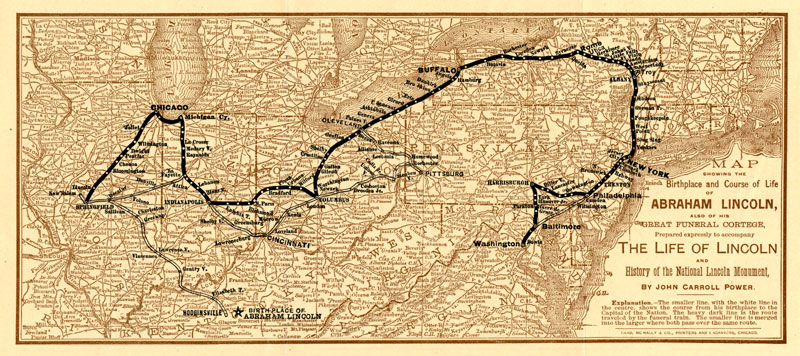 |
| Path of Lincoln's Funeral Train |
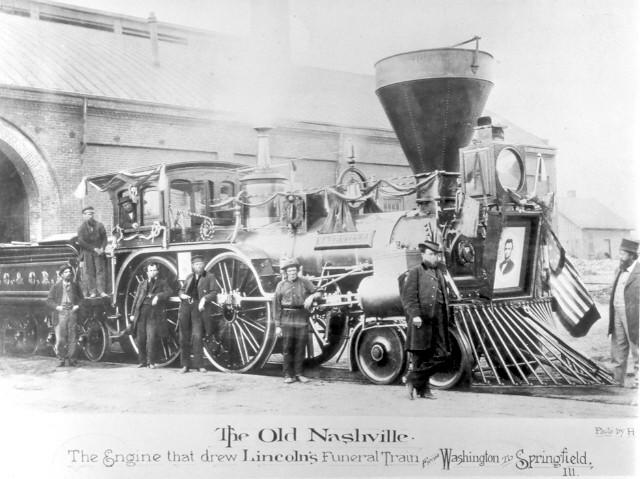 |
| The Train Engine that brought Lincoln Home |
On the day of his funeral, the procession from the capital building itself was only 2 1/4 miles, but it took over 2 hours from the time they stepped off.
From end to end, the procession was some two miles long. On a hot day – the temperature reportedly reached 82 degrees – it was also too much for some participants. Among those reportedly affected by sunstroke was Mayor Dennis.
Some people found vantage points where they could watch the march. Katherine Ramstetter, interviewed by her granddaughter Catherine Baum in the early 1920s, remembered viewing Lincoln’s remains in the Capitol. The next day, however, she chose to watch rather than walk in the procession.
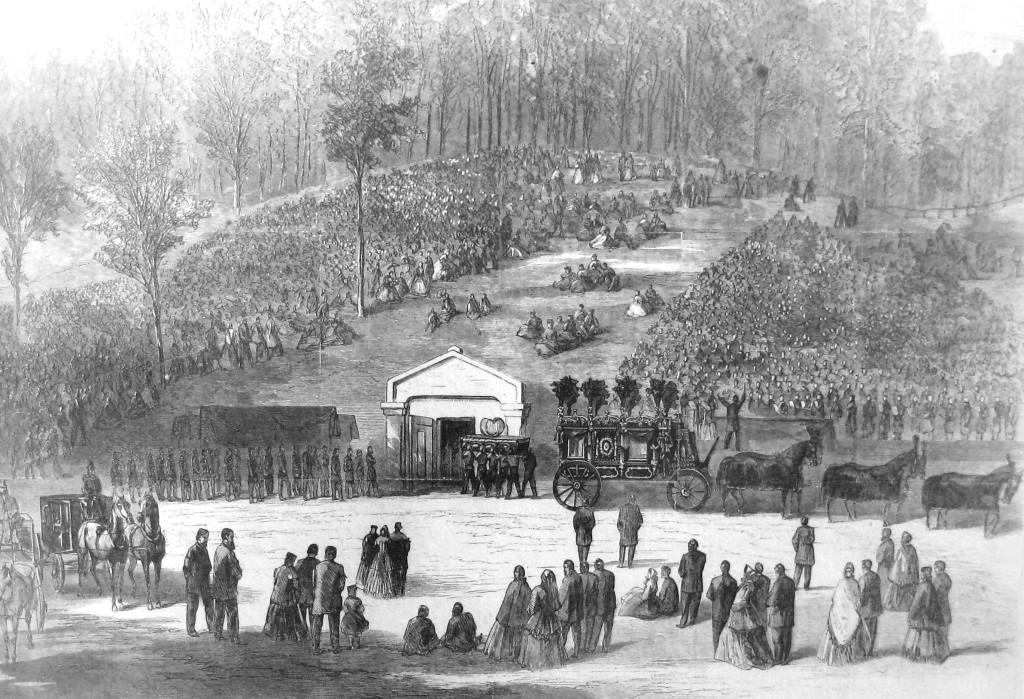 |
| President Lincoln's casket being carried into the receiving vault at Oak Ridge Cemetery, drawing by William Willard for Harper's magazine (Sangamon Valley Collection) |
 |
| Photograph of the hearse used to carry Lincoln's casket from the capital building to Oak Ridge Cemetery (Library of Congress) |
The funeral ceremony was held at the vault. Two stands were built, one east of the vault to hold speakers and one on the west designed to accommodate the choir, a 130-person male chorus from St. Louis accompanied by a brass band. (Most photos and drawings of the ceremony, done facing the vault and the hill, show the speakers’ platform on the left and the choir platform on the right.)
The ceremony apparently began before the rear elements of the procession
reached the cemetery because it was finished by about 3 p.m
The program was:
- Remains placed in vault
- “Dead March from Saul” – choir
- Opening prayer – Rev. Albert Hale of Springfield
- “Farewell, Father, Friend and Guardian,” composed for the funeral – choir
- Scripture reading (from Book of Job) – Rev. N.W. Miner of Springfield
- “To Thee O Lord” – choir
- Reading of Lincoln’s Second Inaugural Address – Rev. A.C. Hubbard of Springfield
- “As When Thy Cross Was Bleeding” – choir
- Eulogy – Methodist Bishop Matthew Simpson of Evanston
- Prayer – Rev. S.W. Harkey of Springfield
- “Funeral Hymn” and Doxology – choir
- Benediction – Rev. Phineas Gurley of Washington, D.C.
Following the service, the iron gates and wooden doors of the vault
were closed and the key presented to Robert Lincoln. He then passed them
on to John Todd Stuart, Lincoln’s first law partner and a cousin of
Mary Lincoln. Soldiers from Camp Butler were posted at the cemetery
entrance and the vault itself to guard against vandalism and over-eager
visitors.
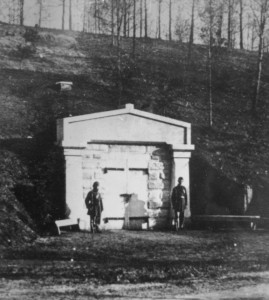 |
| Guards outside the closed and locked receiving vault (SVC) |
Sunset: A last salute of 36 guns was fired to end the day.
For a complete breakdown of the days leading up to the interment, and the final funeral itself, please read the Two days in May: The funeral of Abraham Lincoln which has very detail information about the event.
Pod Cast
Listen to others
Sources:
http://www.history.com/this-day-in-history/lincoln-is-buried-in-springfield-illinois
https://www.nps.gov/abli/learn/education/classrooms/eulogy-of-abraham-lincoln.htm
http://sangamoncountyhistory.org/wp/?p=7141

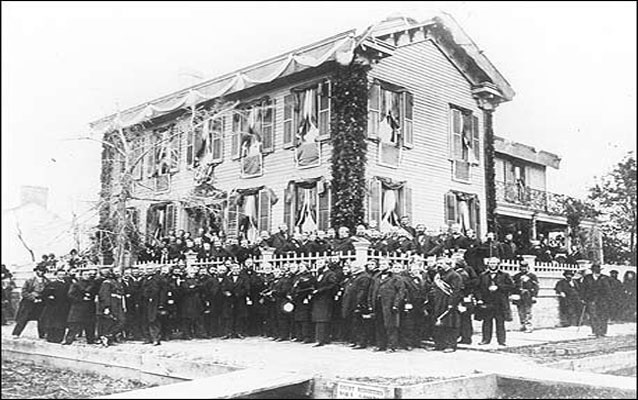

No comments:
Post a Comment